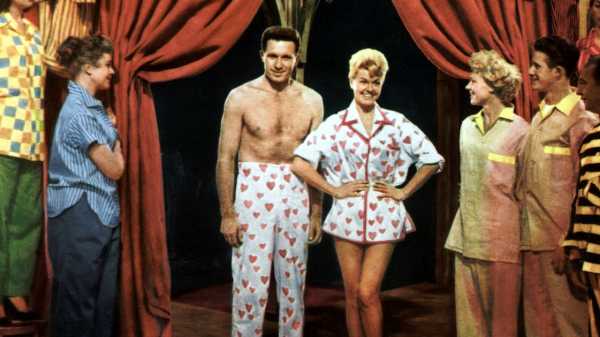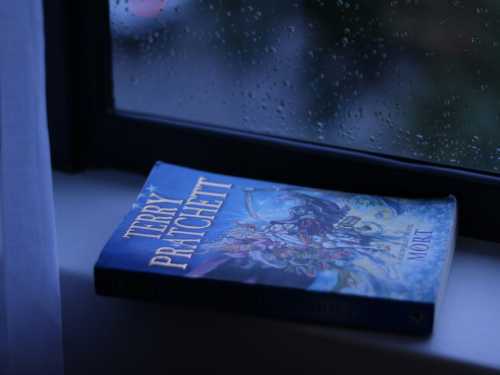
Each week, Richard Brody picks a classic film, a modern film, an
independent film, a foreign film, and a documentary for online viewing.
“Mikey and Nicky”
Photograph from Alamy
It is true that there aren’t nearly as many female directors working in
Hollywood (and off-Hollywood) as there should be; it’s equally true that
many of the best of the ones who have managed to get films made have
been treated contemptuously by the industry, first and foremost, Elaine
May, whose 1972 film “The Heartbreak Kid” had two nominations—for Best
Supporting Actor and Actress. She has also been nominated twice for Best
Adapted Screenplay, both times for movies inferior to her own. To date,
she has only made four features; she has had a thirty-year hiatus
following the critical smackdown of the ingenious
“Ishtar,”
but, even before that, she was out of the directing business for a
decade after making another great movie, “Mikey and Nicky,” from 1976,
which is both a masterwork and a meta-masterwork.In “Mikey and Nicky,”
May responded not only to one of the era’s heroes, John Cassavetes, who
was in the film, she responded even more vigorously to the Mafia-mania
that had taken hold since the rise of “The Godfather” (which won Best
Picture at the same ceremony where “The Heartbreak Kid” was ignored).
“Mikey and Nicky” is a warm, loving, monstrous depiction of the bromance
of two Philadelphia gangsters (played by Cassavetes and Peter Falk)
filmed in long, loose, intimately confrontational, physically abrasive
images, as if borrowing a style and a tone from Cassavetes’s films. She
depicts these hearty, hard-nosed, sentimental tough guys with their full
repertory of long-standing grudges, their betrayals, their gleeful
roughhousing, their vain code of gangland honor, and their casual
brutality—which especially targeted women. She strips the veneer of
dignity and style from the newly canonized Mafia of Coppola’s triumphs.
No wonder she didn’t get an Oscar for it.
“Mikey and Nicky” is available to stream on the Criterion
Channel at
FilmStruck and
Kanopy.
“The Pajama Game”
Photograph from Everett
The nineteen-fifties were a time of vast artistic innovation in
Hollywood, because of court decisions requiring studios to work with
independent producers, the liberating influence of Orson Welles, the
arrival of European directors fleeing the reach of Nazi Germany, and
cultural changes following the Second World War—but you’d hardly know it
from looking at the decade’s nominees for Best Director. Joseph
Mankiewicz and Vincente Minnelli are welcome presences, but there’s no
Otto Preminger (not until 1963, for one of his not-best movies), no
Nicholas Ray, Douglas Sirk, Joseph Losey, Ida Lupino, Fritz Lang,
Jacques Tourneur, Allan Dwan, and no Stanley Donen, whose
musicals—including the exemplary film in the genre, “Singin’ in the
Rain,” from 1952—are among the era’s effervescent delights. I’m
particularly fond of “The Pajama Game,” from 1957, which Donen and
George Abbott co-directed; and it’s a film of appropriately manifold
dimensions. The action is set in and around a pajama factory, where
unionized workers who have an appropriate and unaddressed litany of
demands find themselves confronted by an intransigent boss and a new
manager (John Raitt) who finds common ground, both economic and
romantic, with the shop’s union steward (Doris Day). The action goes
into detail on the negotiations and the boss’s behind-the-scenes
chicanery, as well as the back-room dealings (centered on the impulsive,
high-stepping antics of the short-lived Carol Haney) that bring it to
light. The movie’s most famous number, “Hernando’s Hideaway,” is one
that goes nearly without light altogether, and the erotic tension that
runs throughout the action involves a hearty number by the veterans
Eddie Foy, Jr., and Reta Shaw; an ingenious ballad duet for Raitt and a
Dictaphone; and a rowdy Western-style duet for Day and Raitt that’s one
of the most unexpectedly shivery productions in all Hollywood musicals.
“The Pajama Game” is available to stream on Amazon
Prime.
“Red Hook Summer”
Photograph by David Lee / Variance Films / Everett
Only one director named Spike has been nominated for an Oscar, and it’s
Spike Jonze. One of the Academy’s most dismayingly ridiculous omissions
is Spike Lee. He started as an independent filmmaker and was ignored; he
went to Hollywood and was ignored; and he returned to independent
filmmaking, in 2012, with “Red Hook Summer,” and was ignored again,
though that return—which was also a cinematic return to his Brooklyn
terrain—is among his best, most visionary works. It’s the story of the
thirteen-year-old Silas, who calls himself Flik (Jules Brown), an
Atlanta teen-ager who comes up to Brooklyn to spend the summer with his
grandfather (Clarke Peters), the minister of a Red Hook church. While
there, he becomes friends with a neighbor of the same age named Chazz
(Toni Lysaith), the daughter of a parishioner. The drama is one of
cynicism yielding to discovery; it’s also one of faith yielding to
discernment, when a former parishioner revisits the church and makes a
startling accusation. Lee fills the movie with lyrical asides and
violent passions, brings long-standing frustrations and anguish to
light, and plants the characters firmly within the turbulent course of
history. Also, his cast of actors, which also includes Thomas Jefferson
Byrd, Heather Simms, De’Adre Aziza, Colman Domingo, and Stephen McKinley
Henderson, is in inspired, energized form throughout.
“Red Hook Summer” is available to stream on
Amazon,
Vudu, and
other services.
“La Captive”
Photograph from Alamy
No foreign-film director who started in or past the
mid-nineteen-seventies has been more influential, more original, or, for
that matter, simply more innovative than Chantal Akerman, but she’s not
among the handful of foreign-language-film directors to be nominated for
Best Director in the past forty years. For that matter, her films
haven’t received releases wide enough to be likely to entice the
Academy, but one film that could well have done so—and that, apparently,
had no American commercial release at all—is “La Captive,” from 2000,
her adaptation of Proust’s “La Prisonnière.” Akerman transforms the
drama of a young man who is in love with a young woman who is in love
with another young woman into both an erotic reverie and a grandly
operatic melodrama. Her depiction of fin-de-siècle Paris is set in the
Paris of the end of the twentieth century, infusing modern-day life with
the mores and the psychological intrigue of Proust’s time. The stars,
Sylvie Testud, Stanislas Merhar, and Olivia Bonamy, are exemplary young
French actors, limpid and agitated, relaxed yet precise, and Akerman
places them in majestic tableaux of sumptuous settings, colors, light,
and mood that resonate with the rhapsodic mysteries and voluptuous
overtones of films by Alfred Hitchcock. It should have been an American
art-house hit—and I think that, were it to have been released now, it
would be.
“La Captive” is available to stream on
Fandor or Fandor on
Amazon.
“Salesman”
Photograph from Everett
No documentary director has ever been nominated for Best Director;
Albert and David Maysles, who are perhaps the most influential
documentary filmmakers of the past half century—and whose camera work
alone could have won several times for Best Cinematography—would have
deserved such a nomination, not least for their first feature,
“Salesman,” from 1968, where they got hold of a good subject and
perceived its historic dimensions. (Their short “Christo’s Valley
Curtain” was nominated in 1974.) Following a group of travelling Bible
salesmen who take to the road and go door-to-door peddling luxurious and
expensive religious tomes to people who, often, can ill afford them, the
Maysleses, working with their co-director Charlotte Zwerin (who edited
the film), go Arthur Miller one better: they put the salesmen, who are
dying every second that they’re working at their exasperating jobs, into
contact with their prospective customers (or even two better, as they’re
subjected to the hectoring exhortations of their bosses). In the
process, the filmmakers link the American way of business with the
American strain of piety; with their interventionist, experientially
engaged methods of filmmaking—which turn their participants into
performers—they find the essence of modern character and identity in the
emotional tatters of subjection and submission.
“Salesman” is available to stream on
Amazon,
the Criterion
Channel on
FilmStruck, Kanopy, and
other services.
Sourse: newyorker.com






